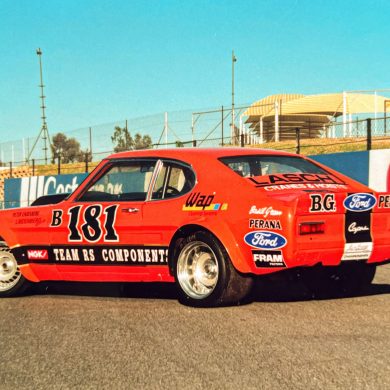On November 6, 1955, Juan Manuel Fangio drove the Maserati Tipo 300s to victory at the Venezuela GP, which started two years of significant accomplishments that pushed the marque’s reputation at the international level.
Today Maserati celebrates the significant win to emphasize the strong bond between the marque and the world of motor-racing. Maserati has always boasted of having a unique racing DNA, being born on the track, matched with the boldness of the Maserati brothers, and also of its drivers. Its history of victories on roads and circuits all over the world has become the marque’s tradition, making it the embodiment of Italian excellence.
The track has always been Maserati’s home, as it was in competition that their myth started to surface. And these days, with the new Era, Maserati is going back to basics and it boldly faces the future with the new MC20 supercar that marks their return to the world of racing.

Maserati Tipo 300S
The Tipo 300S was designed in 1955 as a progression of the 250S single-seater, and it was a feature of Maserati in international racing until 1959.
As early as 1954, the Maserati technical staff began to work increasing the displacement and power output of the 250S prototype. It was equipped with a 230 hp 2.5-liter engine derived from the unit that was mounted in the 250F racer that was used in F1.
The finished product was a six 3.0-liter unit, more powerful, and greater-performing yet had fewer mechanical stresses because of the lower compression ratio and low rpm despite the higher piston speed.
The remaining engine’s architecture and features are similar to the six 2.5-liter unit, which incorporates two overhead camshafts and twin ignition.

From an engineering standpoint, the 300S was magnificent: the seats of the high-diameter valves and two spark plugs recesses for the twin ignition very visible in the hemispherical combustion chamber of the engine.
Additionally, the brake drum was a product of inventiveness where the light alloy casting featured radial fins and holes designed for heat dispersal. Modifications were also performed on the chassis to cope with greater stresses due to the added weight by a trellis of ovals and round tubes.
Externally the car was attractively proportioned with Fantuzzi building the bodywork. The Trident logo was placed on the large front air scoop framed by aluminum profiles with the driver’s seat having a small windshield for protection.

To prevent the air from stagnating in the engine compartment, finned vents were added to the side. The bottom of the left-hand side had twin exhaust pipes running down and ending in the vicinity of the rear wheel. The tail was designed to be bulkier which enclosed the 150-liter fuel tank, the 20 kg side oil reservoir, as well as the car’s spare wheel.
The mid-1950s was marked with new developments in aerodynamics which led to the bodywork of the 300S various having styling upgrades during its run to improve its efficiency.
The 300S showed its skill in competition from its debut in 1955, and its victories on the track were complemented by a large number of orders of the 300S that followed by gentlemen drivers and racing teams.
To make the 300S more competitive, Giulio Alfieri incorporated a succession of experimental improvements to keep the car competitive, like the fuel injection. This proved to be very rewarding in the Italian and international races, making the 300S Maserati’s best car in sports category events for two seasons running.
Although Juan Manuel Fangio gave the Tipo 300S its first win at the Venezuela GP in 1955, 1956 really was the year that it was most triumphant when it almost took the Sports Car world championship. The success of the Tipo 300S was due to its engine’s reliability and the perfect response of its chassis.
It was also in 1956 that Stirling Moss and Carlos Menditeguy took victory in the Buenos Aires 1,000 km behind the wheel of the 300S. Pietro Taruffi also claimed victory at the Giro di Sicilia (1st in class up to 3,000 cc) as well as the Targa Florio (1st in class up to 2,000 cc). Not to be left behind, Jean Behra also won at the Bari and Castelfusano Circuit Races, while Franco Bordini took the win at the Five Hours of Messina. Another highlight for the year was at the 1,000 km at the Nurburgring, where Stirling Moss, Harry Schell, Jean Behra, and Piero Taruffi came home victorious behind the wheel of the Tipo 300S.
In 1957, a more powerful 450S was introduced although the 300S was kept in production until 1959. From 1955 to 1959, there were a total of only 27 Tipo 300S cars were produced.
[Source: Maserati]











A truly beautiful auto design/work of art.